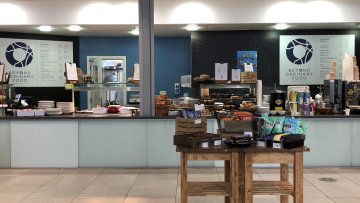12:45
The Holographic Dual of Strongly γ-deformed N=4 SYM Theory
Abstract
We present a first-principles derivation of a weak-strong duality between the four-dimensional fishnet theory in the planar limit and a discretized string-like model living in AdS5. At strong coupling, the dual description becomes classical and we demonstrate explicitly the classical integrability of the model. We test our results by reproducing the strong coupling limit of the 4-point correlator computed before non-perturbatively from the conformal partial wave expansion. Next, by applying the canonical quantization procedure with constraints, we show that the model describes a quantum integrable chain of particles propagating in AdS5. Finally, we reveal a discrete reparametrization symmetry of the model and reproduce the spectrum when known analytically. Due to the simplicity of our model, it could provide an ideal playground for holography. Furthermore, since the fishnet model and N=4 SYM theory are continuously linked our consideration could shed light on the derivation of AdS/CFT for the latter. This talk is based on recent work with Amit Sever.


